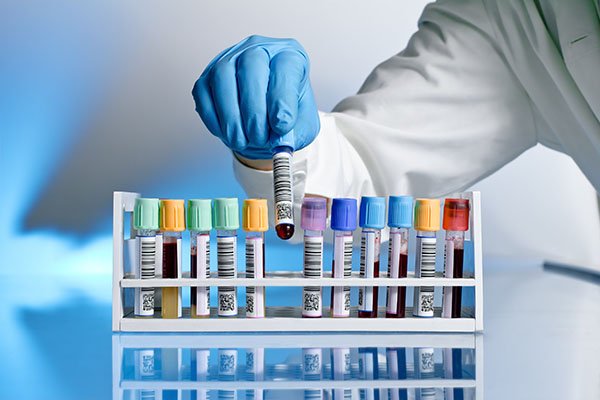The Importance of Proper Medical Device Storage and Handling in Hospitals
Summary
- Hospitals must comply with strict Regulations for storing and handling medical devices to ensure patient safety and maintain quality care.
- Proper storage and handling practices include inventory management, temperature control, cleanliness, and security measures.
- Training and education for staff members are crucial to ensure they understand and follow guidelines for medical device storage and handling.
The Importance of Proper Medical Device Storage and Handling
Hospitals rely on a vast array of medical devices and equipment to provide quality care to patients. From syringes and bandages to MRI machines and ventilators, these tools are essential for diagnosing and treating illnesses and injuries. However, improper storage and handling of medical devices can compromise patient safety and the effectiveness of medical interventions. Hospitals must adhere to strict Regulations and guidelines for storing and handling medical devices to ensure the devices remain safe and effective for patient use.
Regulatory Requirements
The Food and Drug Administration (FDA) regulates medical devices in the United States to ensure their safety and effectiveness. Hospitals must comply with FDA Regulations as well as follow guidelines from organizations such as the Association for the Advancement of Medical Instrumentation (AAMI) and the Joint Commission. These Regulations cover various aspects of medical device storage and handling, including inventory management, temperature control, cleanliness, and security measures.
Inventory Management
Proper inventory management is crucial for hospitals to track and control medical devices effectively. Hospitals must maintain accurate records of all medical devices in their inventory, including information on the devices' specifications, expiration dates, and usage history. Regular audits and checks of inventory levels help hospitals identify outdated or damaged devices that need to be removed from circulation. Additionally, automated inventory management systems can streamline the process and reduce the risk of errors.
Temperature Control
Many medical devices are sensitive to temperature and humidity levels and can become damaged if exposed to extreme conditions. Hospitals must store these devices in a climate-controlled environment to prevent damage and ensure their reliability. Refrigerators, freezers, and climate-controlled storage areas are used to maintain the required temperature for storing devices such as vaccines, blood products, and medications. Regular monitoring of temperature levels and maintenance of storage units are essential to prevent deviations that could compromise the devices' effectiveness.
Cleanliness
Cleanliness is paramount in the storage and handling of medical devices to prevent contamination and infection. Hospitals must adhere to strict cleaning protocols for storage areas, shelves, and containers to maintain a sterile environment for devices. Regular cleaning and disinfection of storage areas help reduce the risk of Cross-Contamination and ensure the safety of patients and staff. Additionally, hospitals must follow proper Hand Hygiene practices when handling medical devices to prevent the spread of infections.
Security Measures
Security measures are critical to safeguard medical devices from theft, loss, or tampering. Hospitals must implement access control measures to restrict entry to storage areas and ensure only authorized personnel can access medical devices. Surveillance cameras, alarms, and inventory tracking systems help hospitals monitor and track devices to prevent unauthorized removal or use. Proper labeling and packaging of devices also play a role in ensuring their security and preventing mix-ups or errors during handling.
Training and Education
Training and education for hospital staff members are crucial to ensure they understand and follow guidelines for medical device storage and handling. Regular training sessions on proper storage protocols, inventory management techniques, and infection control practices help staff members stay informed and updated on best practices. Hands-on training and simulations can enhance staff members' skills and confidence in handling medical devices correctly. Education on the identification of counterfeit devices or components is also essential to prevent the use of substandard or unsafe equipment in patient care.
Conclusion
Proper storage and handling of medical devices are essential for hospitals to maintain quality care and ensure patient safety. By complying with regulatory requirements, implementing best practices for inventory management, temperature control, cleanliness, and security measures, and providing training and education for staff members, hospitals can prevent errors, contamination, and device failures that could jeopardize patient outcomes. Adhering to stringent guidelines for medical device storage and handling reflects hospitals' commitment to delivering safe and effective care to patients.

Disclaimer: The content provided on this blog is for informational purposes only, reflecting the personal opinions and insights of the author(s) on the topics. The information provided should not be used for diagnosing or treating a health problem or disease, and those seeking personal medical advice should consult with a licensed physician. Always seek the advice of your doctor or other qualified health provider regarding a medical condition. Never disregard professional medical advice or delay in seeking it because of something you have read on this website. If you think you may have a medical emergency, call 911 or go to the nearest emergency room immediately. No physician-patient relationship is created by this web site or its use. No contributors to this web site make any representations, express or implied, with respect to the information provided herein or to its use. While we strive to share accurate and up-to-date information, we cannot guarantee the completeness, reliability, or accuracy of the content. The blog may also include links to external websites and resources for the convenience of our readers. Please note that linking to other sites does not imply endorsement of their content, practices, or services by us. Readers should use their discretion and judgment while exploring any external links and resources mentioned on this blog.
